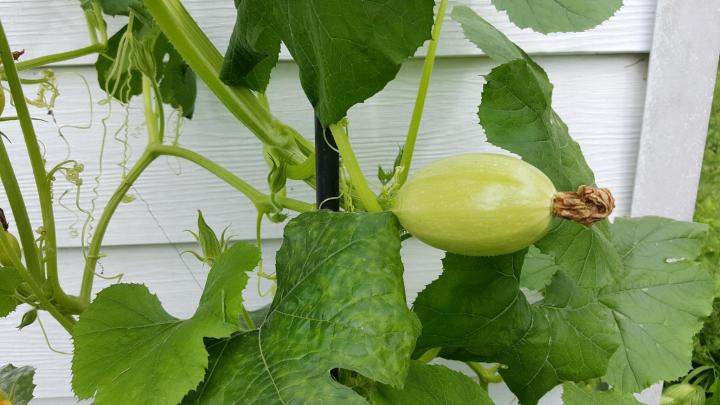What are the vertically growing rattan vegetables? What are the advantages of matters needing attention in growing rattan vegetables
Vertical horticulture, also known as intensive gardening, is not a new idea, but in recent years, with more and more ideas about how to grow, it has gained momentum. This method makes a lot of sense, especially for gardeners with limited space or too much outdoor gardening to deal with.
To successfully "grow vertically", you need to keep the following points in mind:
Choosing the right crops and cultivated varieties is the key; unlike shrub plants, vines, vines and vines are easy to grow on the ground.
If the flowerpot is too small, using a container that can hold adult plants is also the key to growth retardation.
It is important to keep plants away from other crops; a wise strategy is to keep them away from sun-loving species and shade residents.
Watering is also a consideration, and you may have to do so more frequently, because the soil surfaces of vertically growing plants tend to be more exposed and therefore dry quickly.
With few precautions taken, vertical gardens offer countless benefits.
Benefits of vertical gardening
First and foremost: increase production. Making the most of space means getting more. The maintenance and harvest of vertical planting is also physically easier to reach a higher level, so the need for bending and kneeling is minimal.
In addition, because leaves and fruits are high above the ground, they are less likely to get sick; upward growth provides better air circulation, which means plants dry faster after watering, thereby reducing the risk of hygrophilic fungi such as powdery mildew and rust.
In general, symptoms of disease and evidence of pests are also more obvious, so they can be resolved as soon as possible. In addition, when plants are not scattered on the ground, more leaf surfaces are exposed to sunlight, which can lead to healthier growth.
When you need to choose plants for your vertical garden, consider that their growth habits are the most important factor affecting success.
Spaghetti pumpkins growing on vines.
Recommend vertical garden plants
Crops and varieties that are easy to train vertically include:
Cherry tomato: & # 39; & # 39; & # 39; black cherry'; & # 39;; & # 39; & # 39; & # 39; & # 39; & # 39; & # 39; & # 39; black tomato; & # 39; & # 39; & # 39; & # 39; & # 39; black tomato; & # 39; & # 39; black tomato; & # 39; & # 39; & # 39;
Cucumber: & # 39, & # 39, & # 39, & # 39, & # 39, & # 39, & # 39, & # 39, & # 39, & # 39, & # 39, & # 39, & # 39, & # 39, & # 39, & # 39, & # 39, & # 39, & # 39, & # 39, & # 39, & # 39, & # 39, & # 39, & # 39, & # 39
Mung beans: "Romano Italian", "Melavia Venice", "Bakao Gold"
Melon: "delicious 51", "Tigger", "Sleeping Beauty" (musk melon), "White Miracle", "Yellow Doll" (watermelon)
Pea: & # 39; double & # 39; double & # 39; Sweet Garden & # 39; Master & # 39; Sugar Snapshot & # 39; Sugar Snapshot & # 39
Pumpkin: acorn, Delicata, Huangxia, zucchini

- Prev

Grain prices changed greatly in 2019, and the price of Gaoping Wet Valley fell sharply by 2019 per jin.
Recently, some areas of Kaohsiung and Pingtung began to harvest rice, but it is reported that because rice was abundant last year and the harvest reached a new high, it is still impossible to digest it, so the price offered by grain merchants is less than 9 yuan per unit, and many farmers have responded to local public opinion representatives to plant rice roots.
- Next

Conversion of agricultural and animal husbandry manure wastewater to fertilizer, non-smelly and effective for plant growth is helpful to increase the sweetness of fruits and vegetables.
In order to make effective use of animal husbandry wastewater, Pingtung County Environmental Protection Bureau began to promote the use of biogas residue and biogas slurry after fermentation treatment of livestock wastewater as fertilizer since 105 years. Wang Yixuan, head of the Water pollution Prevention and Control Section of Pingtung County Environmental Protection Bureau, explained that after nearly three years of field use, many farmers have responded.
Related
- A course of planting techniques and methods on how to grow carrots
- How to plant the latest tulips?
- Is it better to pick tea in the morning or in the afternoon? When is the best time for tea to be picked? what is the third or fifth tea?
- Launch Yuanxiao Happy combination Haocha + Tea Yuan healthy Taste
- Penghu Tourism "Fireworks 20 Parade with You"
- 2022 West Lake Happiness holds "Digital Revitalization Voucher" and draws iphone13 and laptop.
- Banqiao Fuzhou social houses are designed to change start-up combined with police elimination to create a safe and livable environment
- The convenient measure of "mechanical weeding" in Xinbei has been abused and the Agriculture Bureau has imposed heavy penalties on the illegal land consolidation.
- Changgeng University Joins Hands with Four Memory Factories to Rescue Memory Talent Shortage
- The list of Taiwan's top 100 MVP managers is listed by the Director-General of the Farmers' Association of Sanxia District.

